Arts & Entertainment
Portal to the past
Legendary photographer Leibovitz unveils new Smithsonian history-inspired show

‘Annie Leibovitz: Pilgrimage’
Smithsonian American Museum of Art
8th and F Street, NW
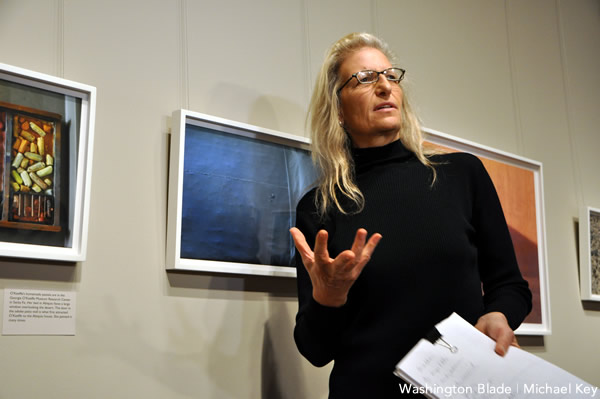
Annie Leibovitz in Washington Tuesday guiding a press tour of her new Smithsonian exhibit 'Pilgrimage.' (Blade photo by Michael Key)
Throughout her 40-year career, renowned American photographer Annie Leibovitz has remained a constant on the celebrity portraiture scene photographing everyone from Mick Jagger to her late lover author Susan Sontag to Miley Cyrus. In many instances her creative, nontraditional approach to making portraits has raised Leibovitz’s already celebrated subjects to cultural icon status (think a naked-and-very-pregnant Demi Moore on the cover of Vanity Fair).
But despite fabulous commercial and artistic success, Leibovitz, 62, went through a very public financial rough patch in recent years. It was during this time of duress that she opted to take a step back and pursue an unassigned, more personal project. In the tradition of great photographers like Walker Evans and Robert Frank, Leibovitz hit the road looking for inspiration and sources of renewal. In her travels, she was drawn to storied locales including Elvis’ Graceland and Georgia O’Keefe’s New Mexico studio, and people of historical significance like Annie Oakley and Martha Graham — stars from the past. And though she didn’t photograph any people for the project, she did shoot objects, landscapes and interiors connected to their lives and memories.
The result of her almost exclusively cross country odyssey (there was a brief trip to London) is “Pilgrimage” the book, as well as “Annie Leibovitz: Pilgrimage,” a photographic exhibition of 64 gorgeous and intriguing photos taken between April 2009 and May 2011 that currently fills three rooms on the second floor of the Smithsonian American Art Museum. It’s up through May 20.
At a Tuesday press event, an amiable and forthcoming Leibovitz (tall and trim in black turtleneck, black pants and hiking boots) leads a group of press types through the exhibition. Going into the project, Leibovitz didn’t quite know what was going to happen, but that’s when the magic happens, she says. An interest in the Lincoln Memorial became a broader investigation into Gettysburg, Lincoln’s boyhood homes and African-American contralto Miriam Anderson who famously sang on the steps of the Memorial in 1939 after being denied the right to perform at segregated Constitution Hall. The exhibition includes a haunting photo of one of Anderson’s gowns from the era.
Similarly, when the New York-based Leibovitz traveled to Concord, Mass., to check out Walden Pond and Henry David Thoreau, she discovered Ralph Waldo Emerson’s library and novelist Louisa May Alcott’s carefully preserved home. In Amherst, Leibovitz dove into the life of Emily Dickinson (a Sontag favorite). The exhibit includes a tight shot of one of Dickinson’s surviving dresses. Contrary to what’s been said, the poet did not spend her last years roaming the house-shrouded specter. In fact, her garment of choice was an ornately embroidered white nightgown with alabaster buttons.
The project took Leibovitz west to shoot Annie Oakley’s riding boots and a bullet pierced heart-shaped target from the cowgirl’s Wild West Show. In England, Leibovitz made beautiful photos of Freud’s couch and the surface of Virginia Woolf’s grubby, ink-stained writing desk. And closer to home, she shot a peek into Val-Kill, Eleanor Roosevelt’s modest girls-only retreat in the Hudson Valley.
“Pilgrimage” is Leibovitz’ first all-digital show, and though she professes a keen interest in new methods of photography (“You’ve got to keep up.”), she likes to keep things looking real. Her photos are stylized, abstract and literal. Some shots (including an overhead look at Thoreau’s bed), she describes as more documents than photographs.
While she’d hoped for the book, Leibovitz didn’t expect “Pilgrimage” to be shown at the Smithsonian.
“It’s wonderful. These rooms are brimming with history. They could actually be photographed as part of the exhibition,” she says. “When I first came here I noticed the number of school children touring the gallery so I intentionally hung the show especially low and crowded the rooms with lots of photos and information — something the exhibition’s curator [Andy Grundberg ] isn’t too happy about. I can’t wait to watch the first big group of kids come through.”
For history buff Leibovitz, visiting home museums, sifting through artifacts and being seduced by the past proved a real kick; but by no means has she abandoned the celebrity portrait work that made her a famous: “I love my portrait work and did this other work to protect and fuel her nurture work. I’m back in a big way.”
What she’d most like people to take from the exhibition, says Leibovitz, is for “everyone to realize that it’s a big country out there. Go ahead, hit the road and find places and things that inspire and mean something to you.”
Photos
PHOTOS: Montgomery County Pride in the Plaza
LGBTQ celebration held in downtown Silver Spring
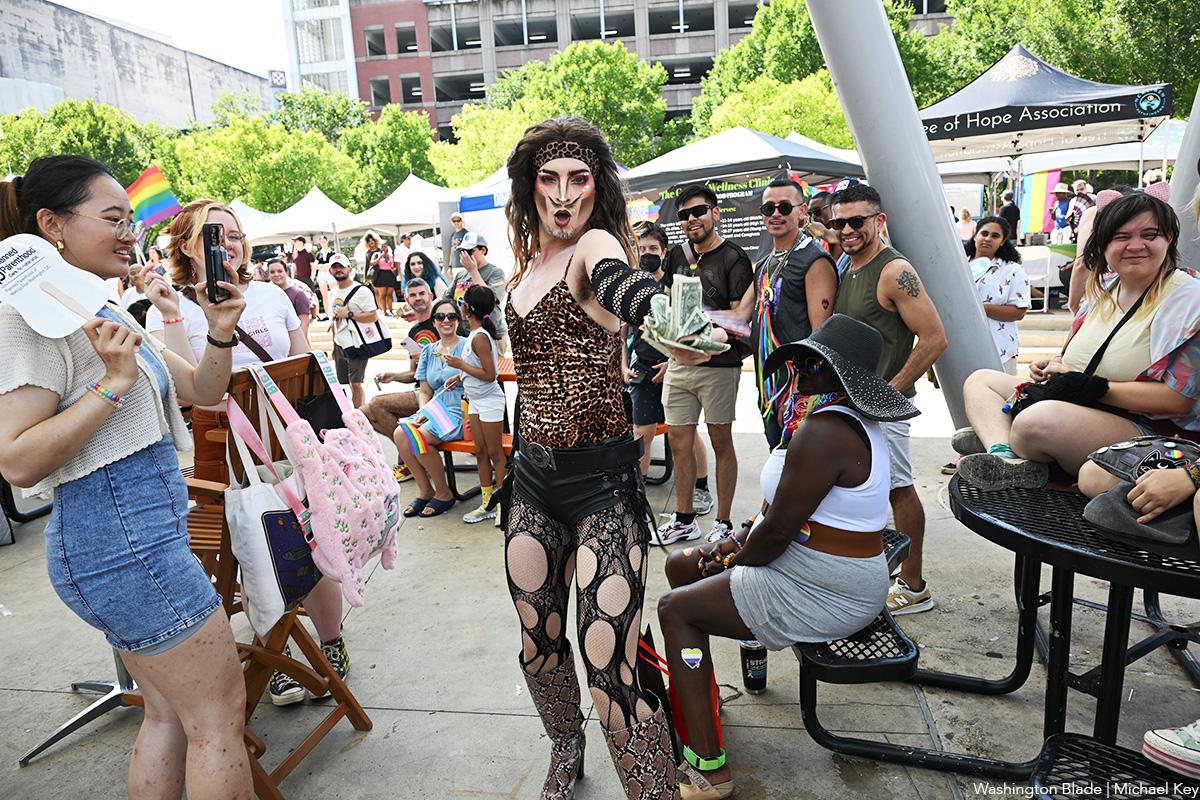
Montgomery County Pride in the Plaza was held on Sunday, June 29 at Veterans Plaza in Silver Spring, Md.
(Washington Blade photos by Michael Key)
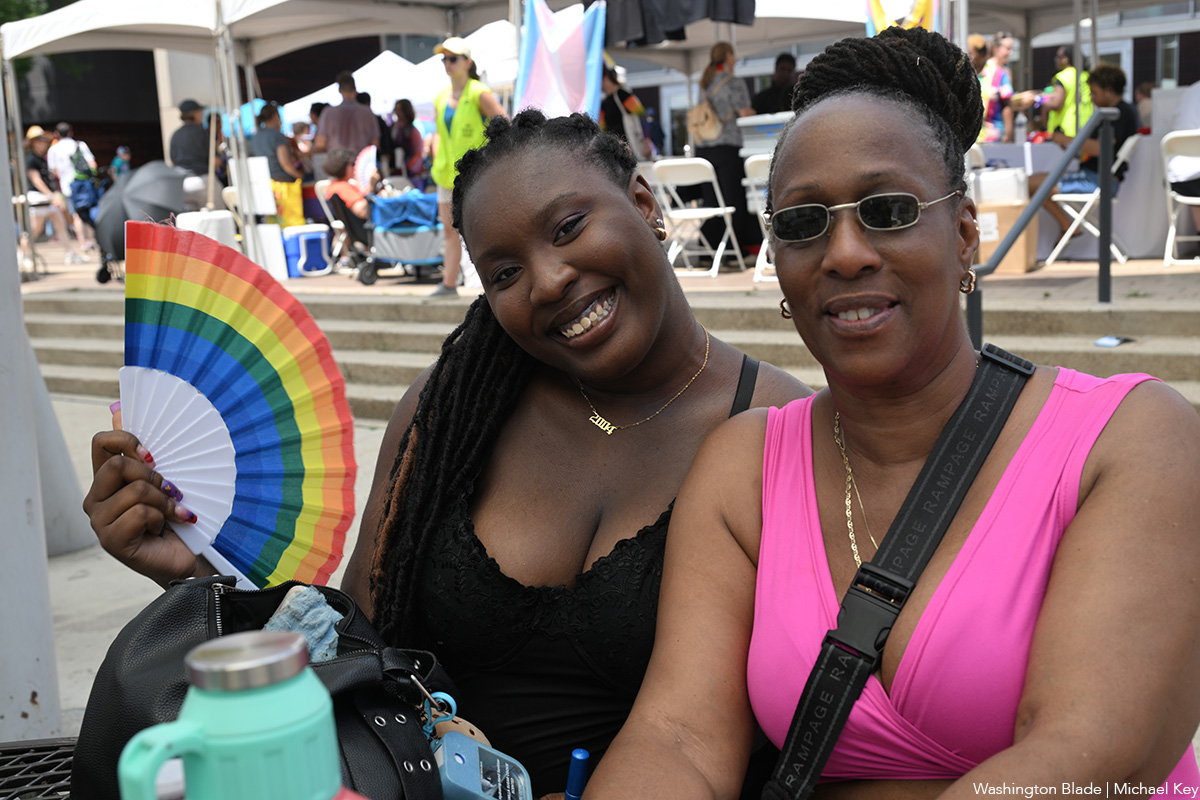
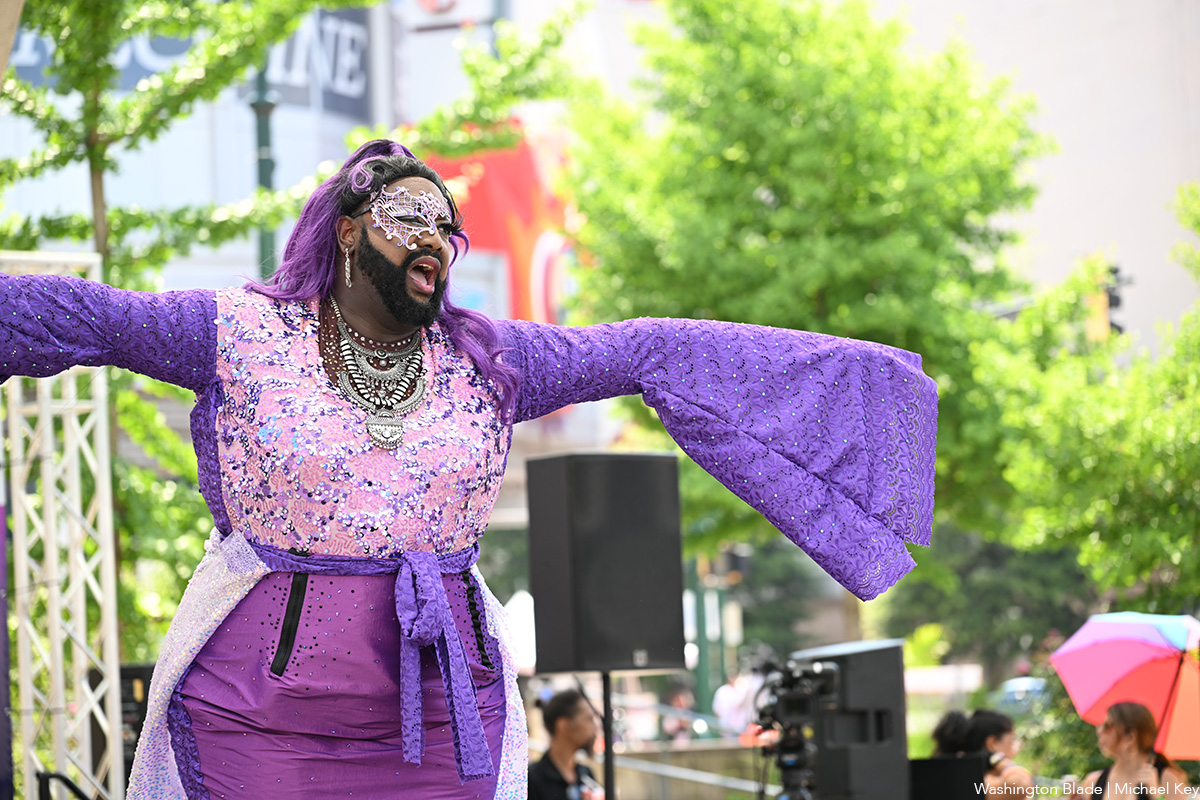

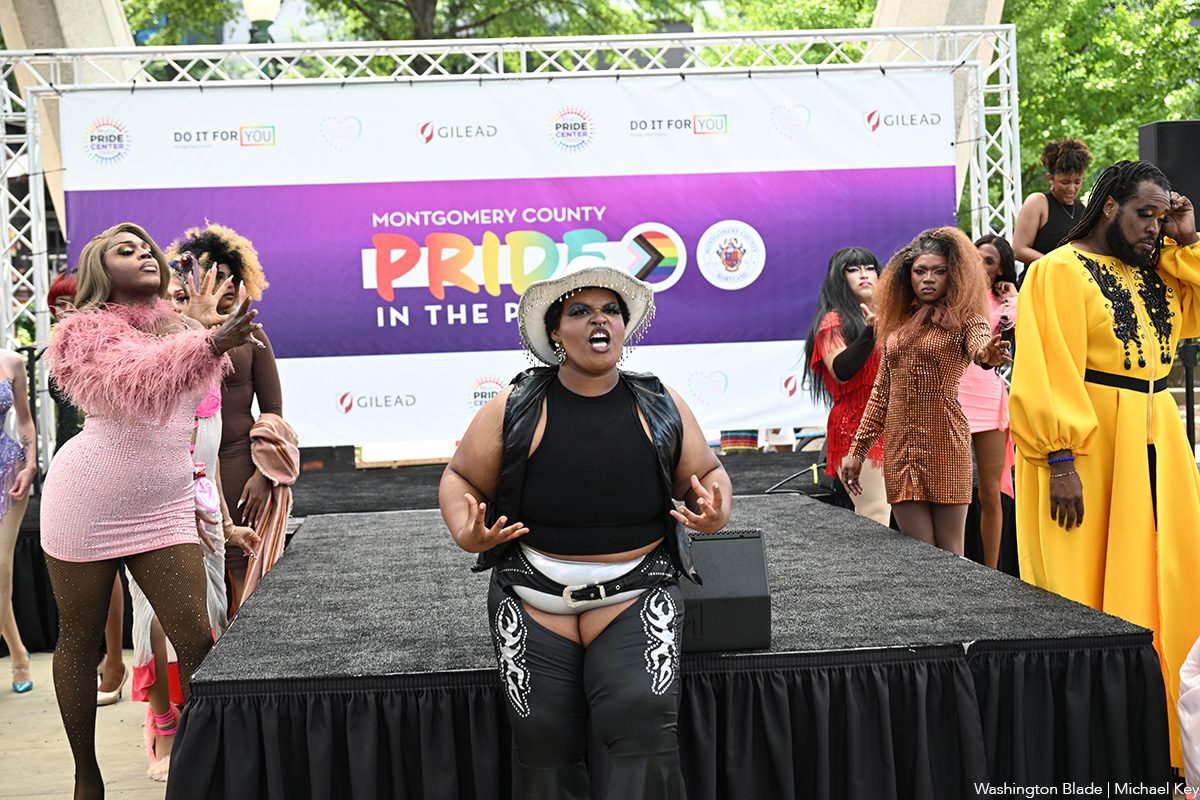
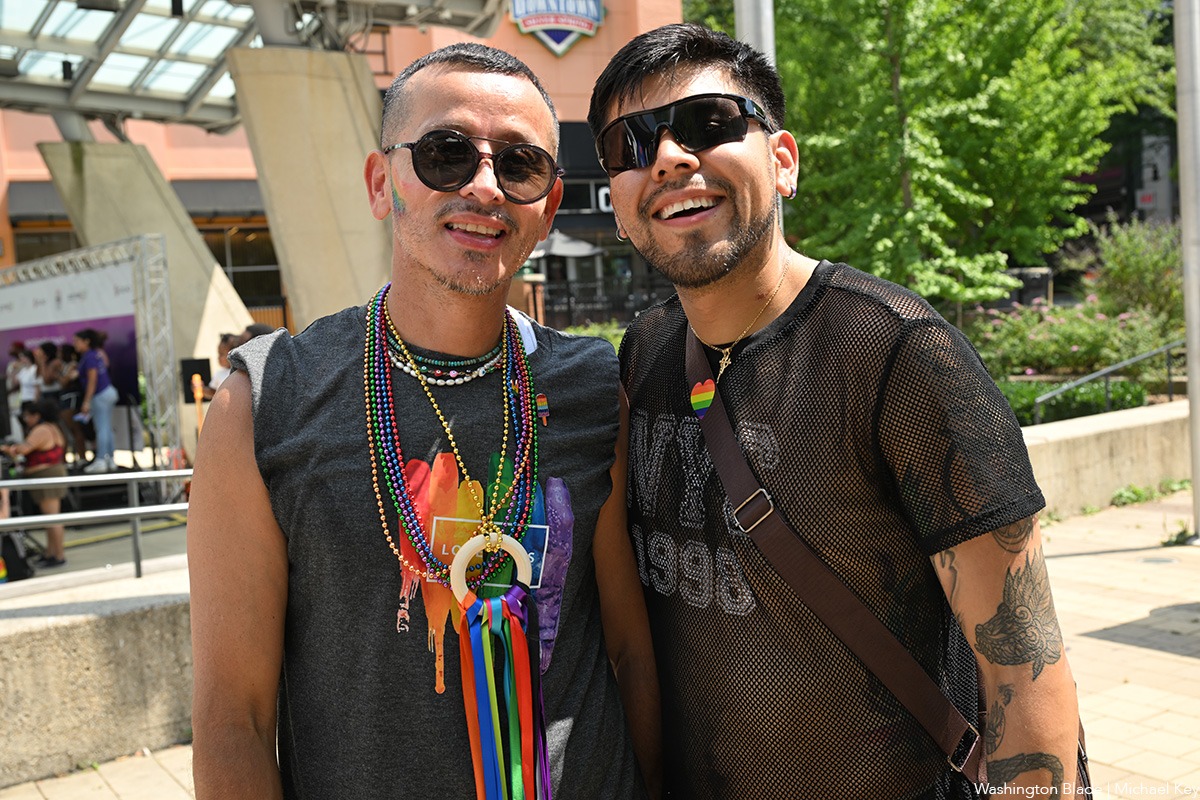


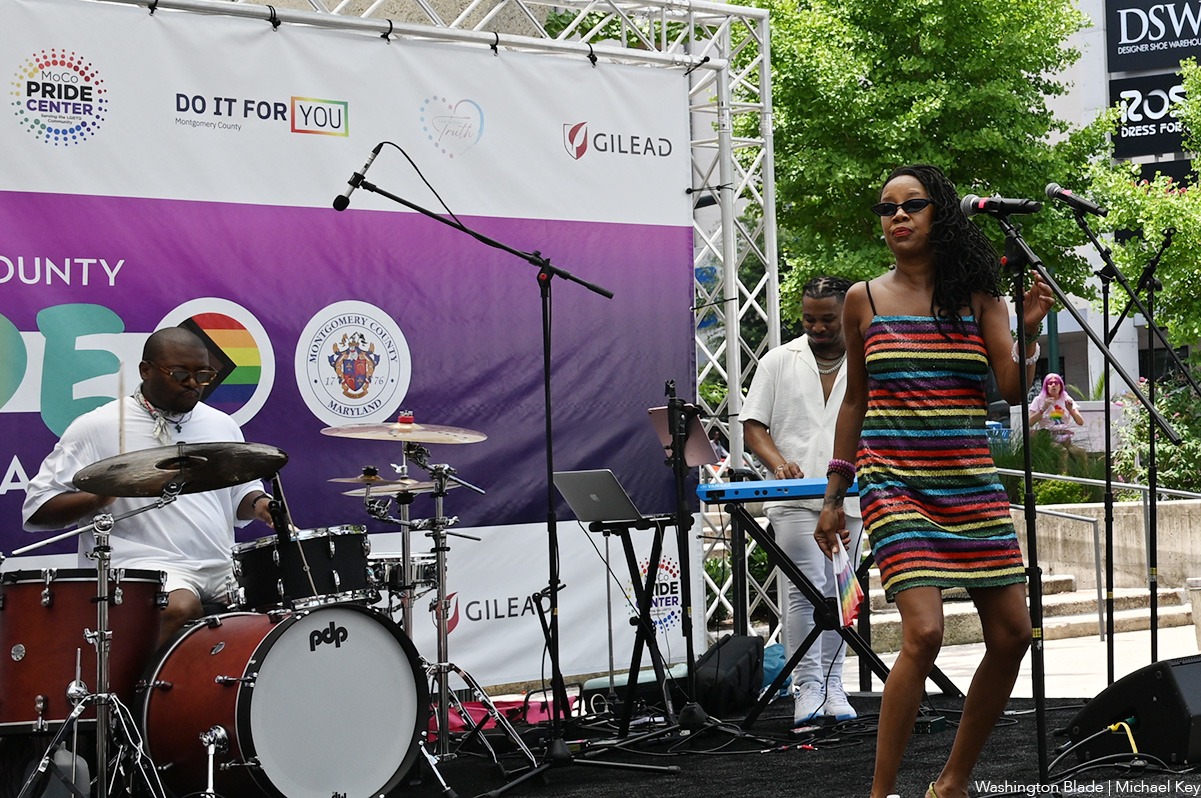
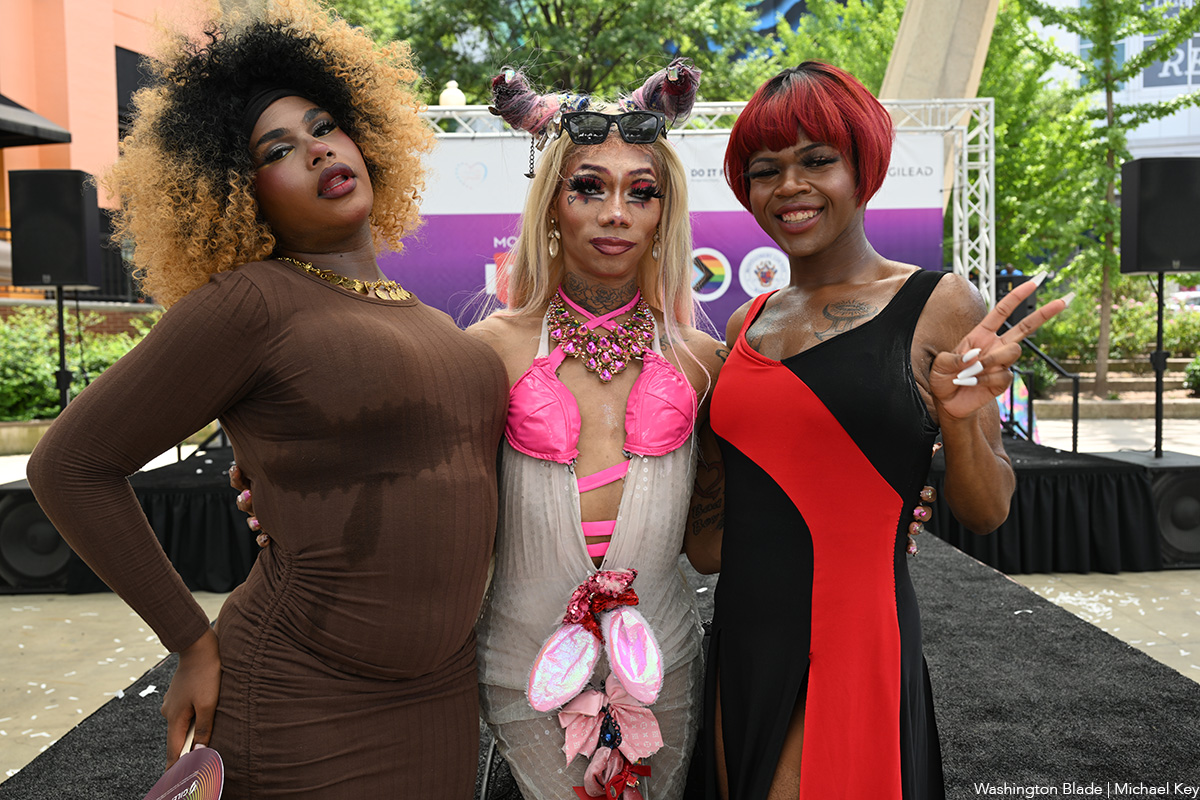
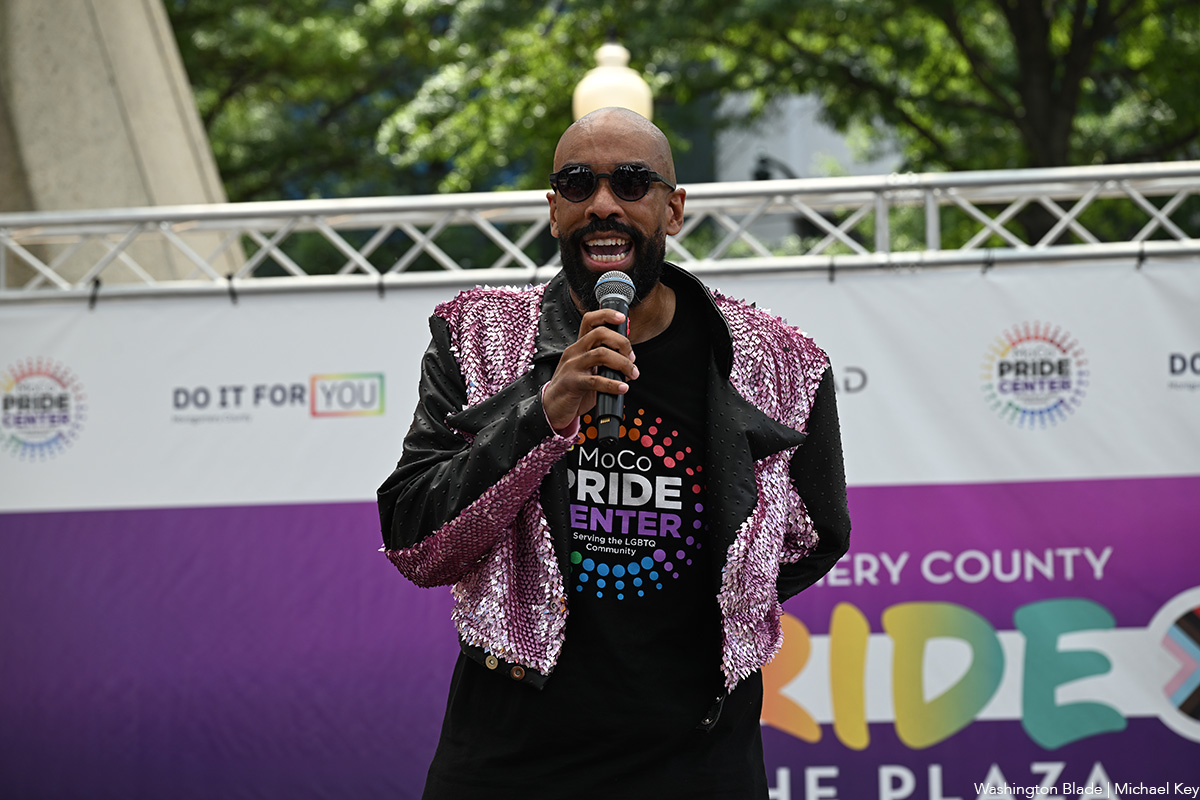

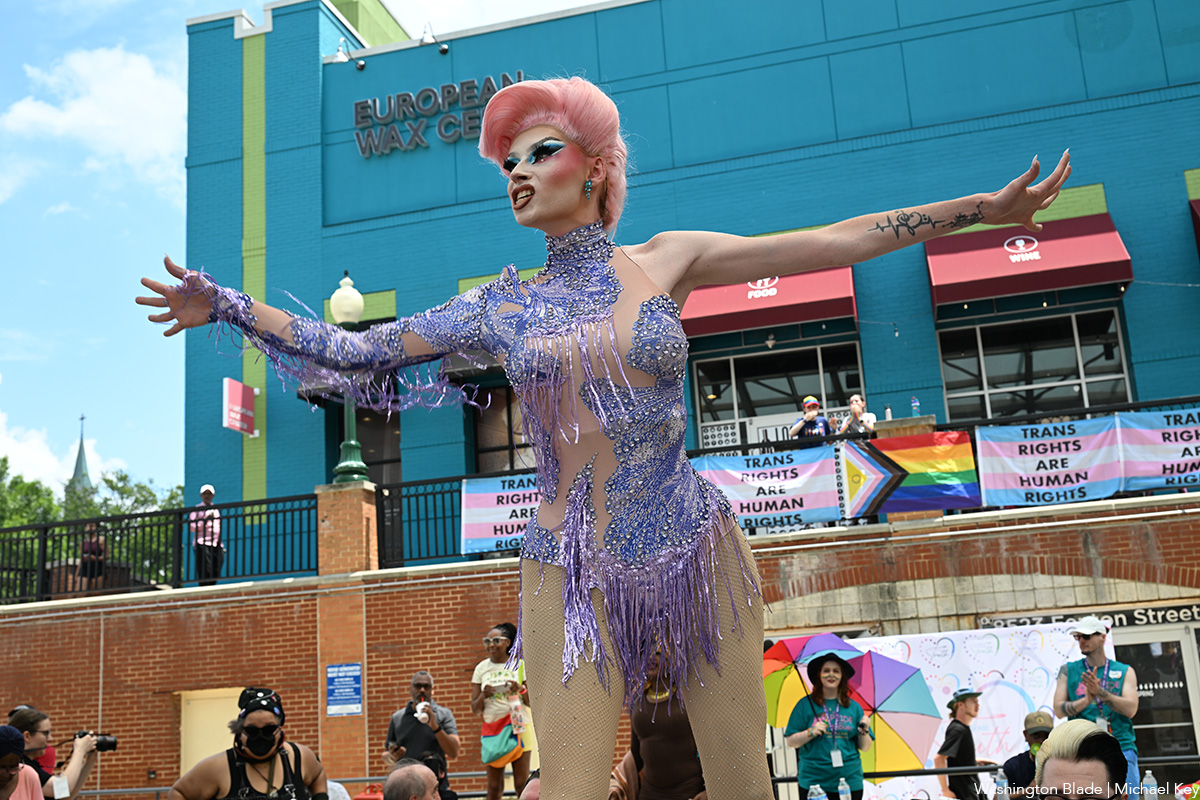
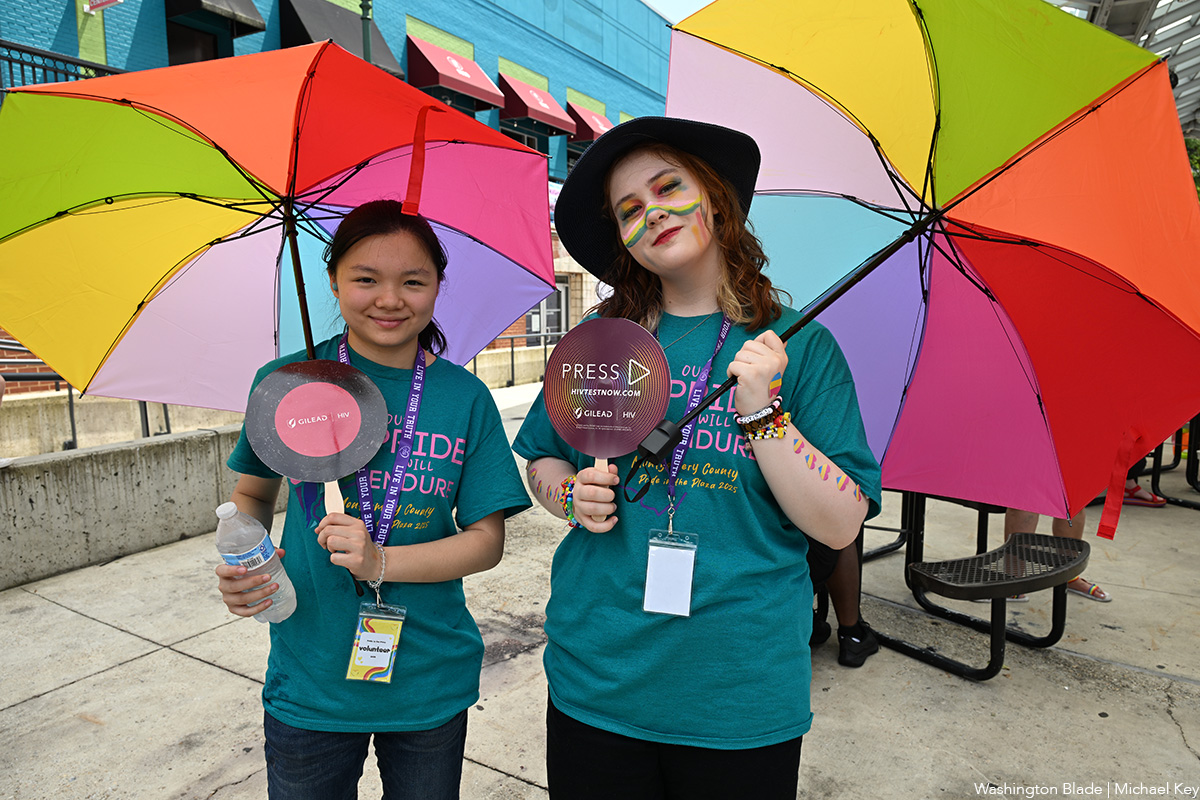
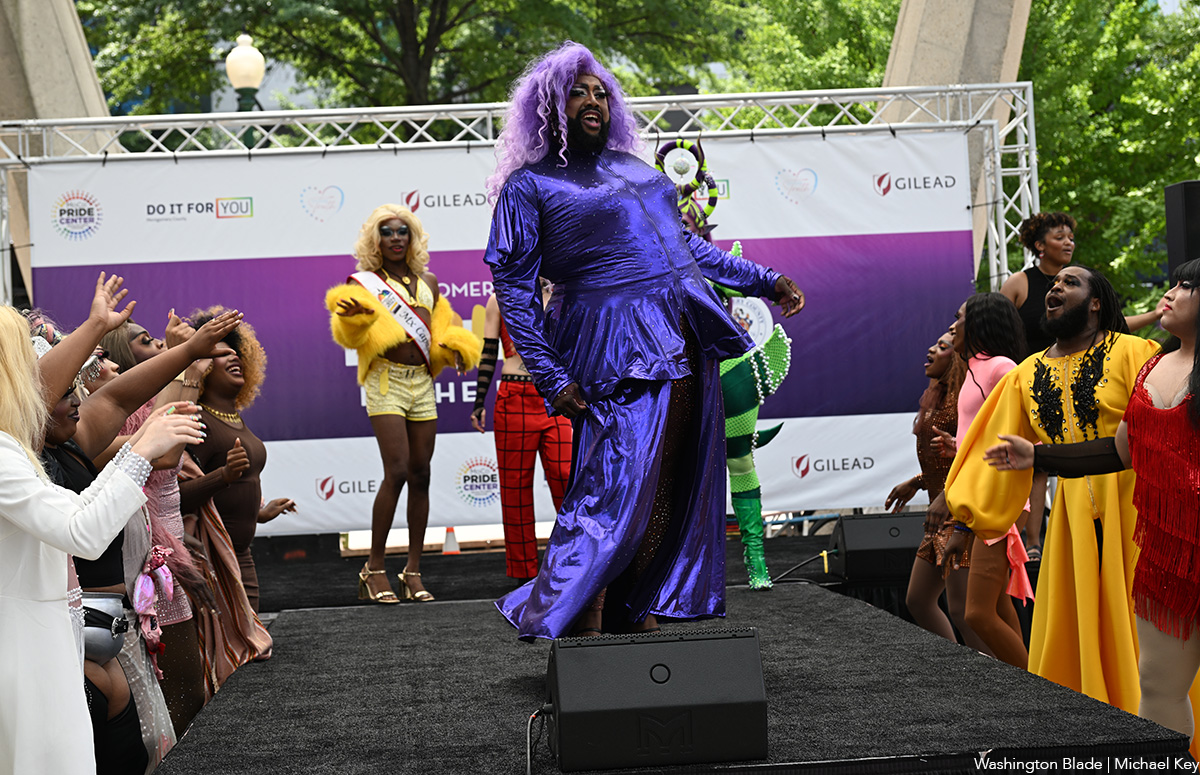

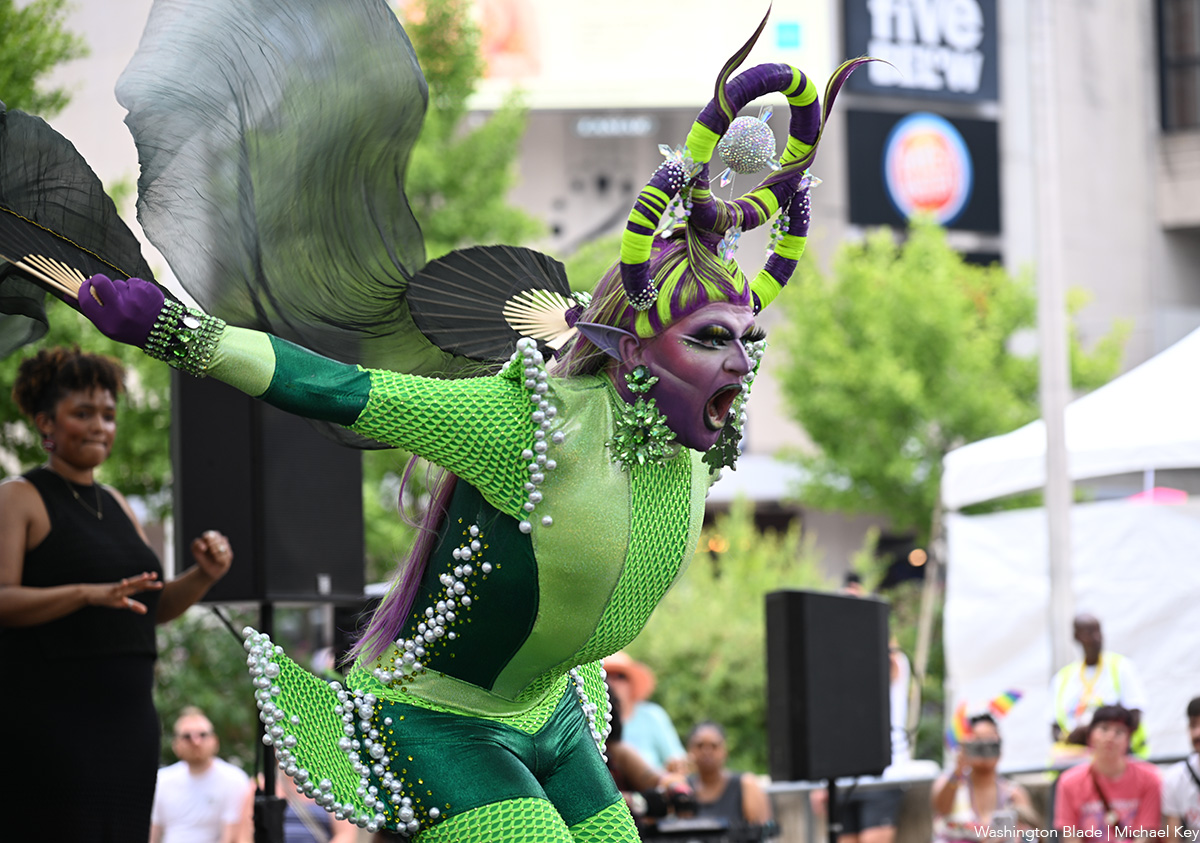

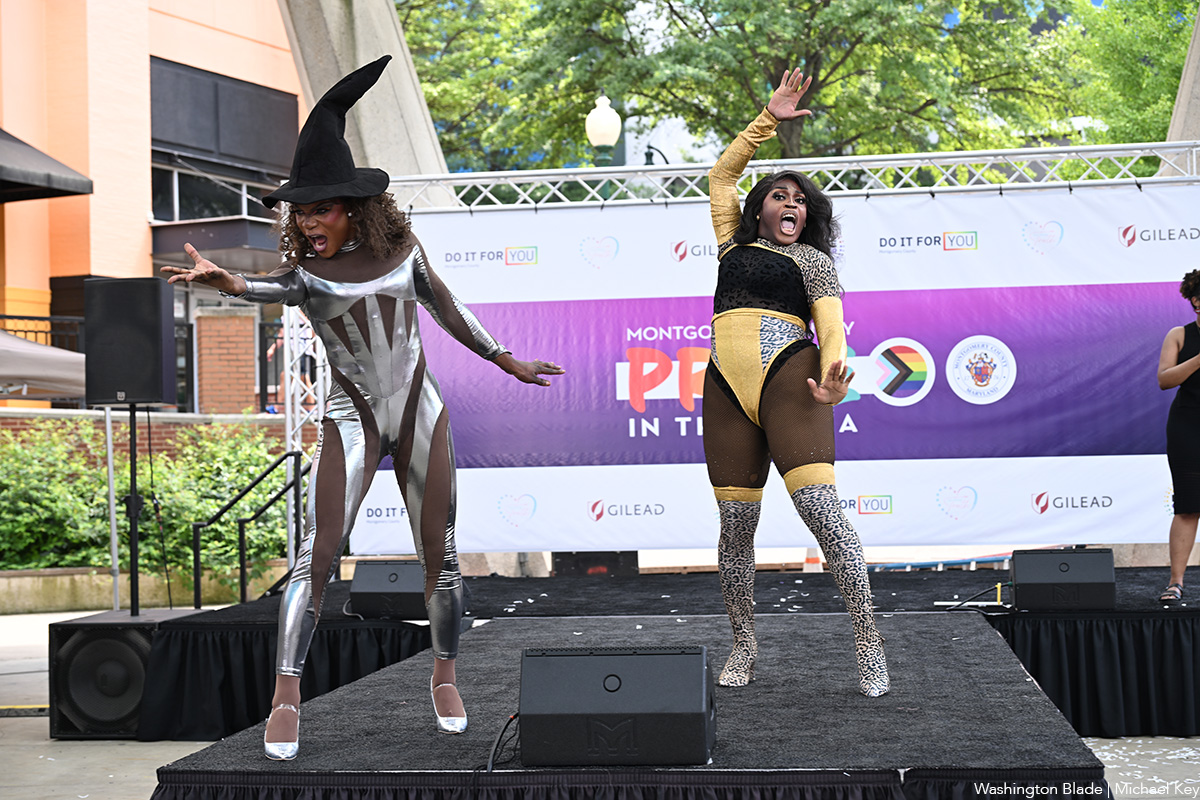
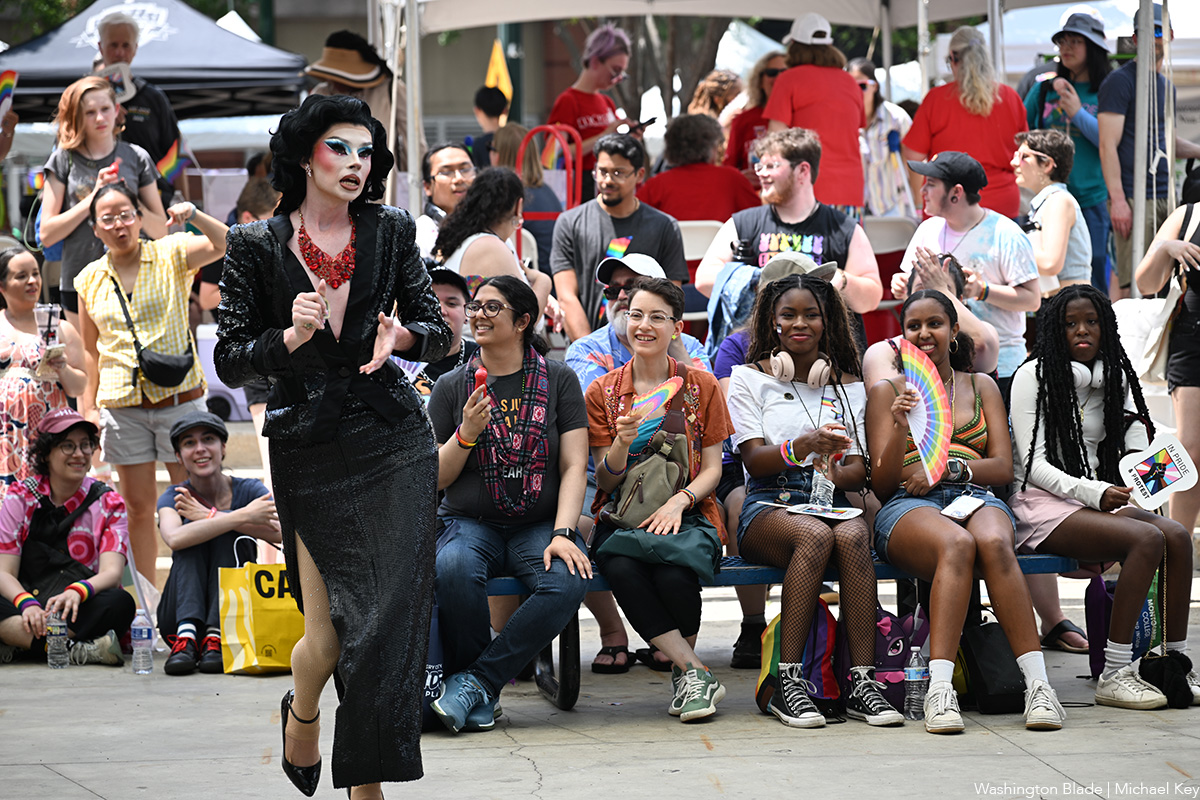
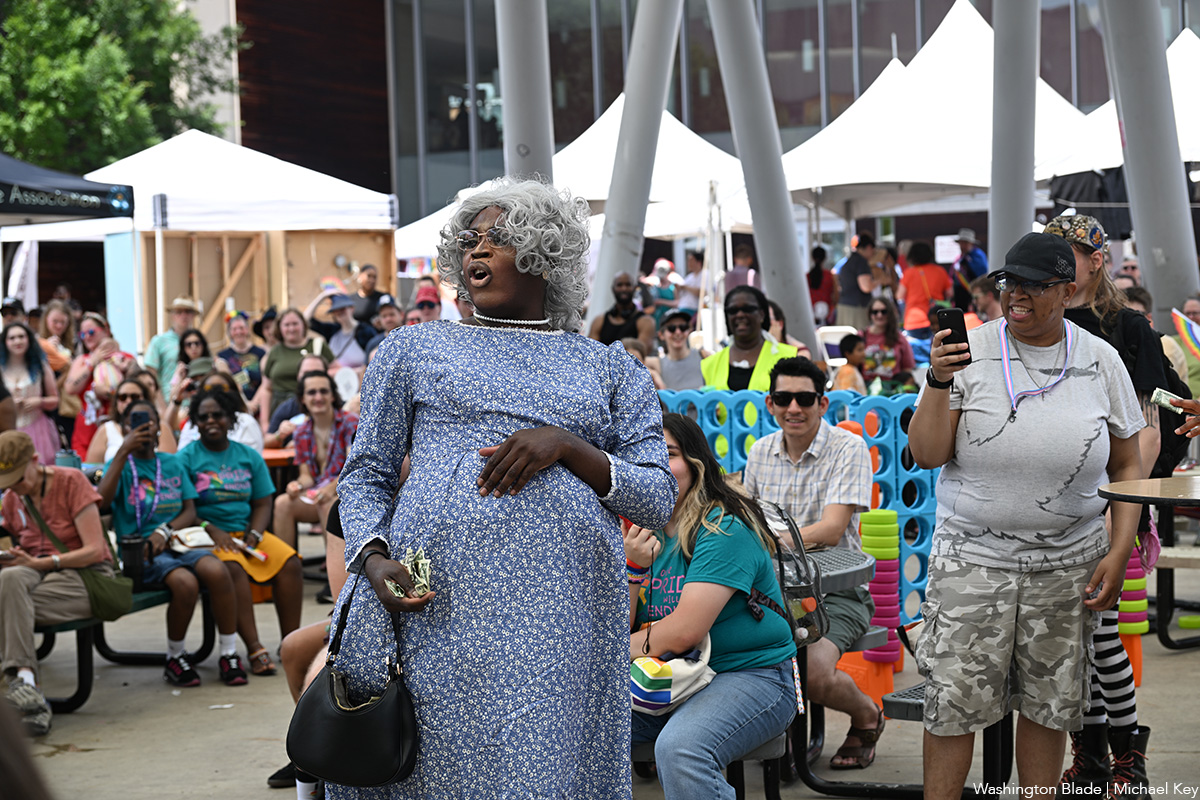

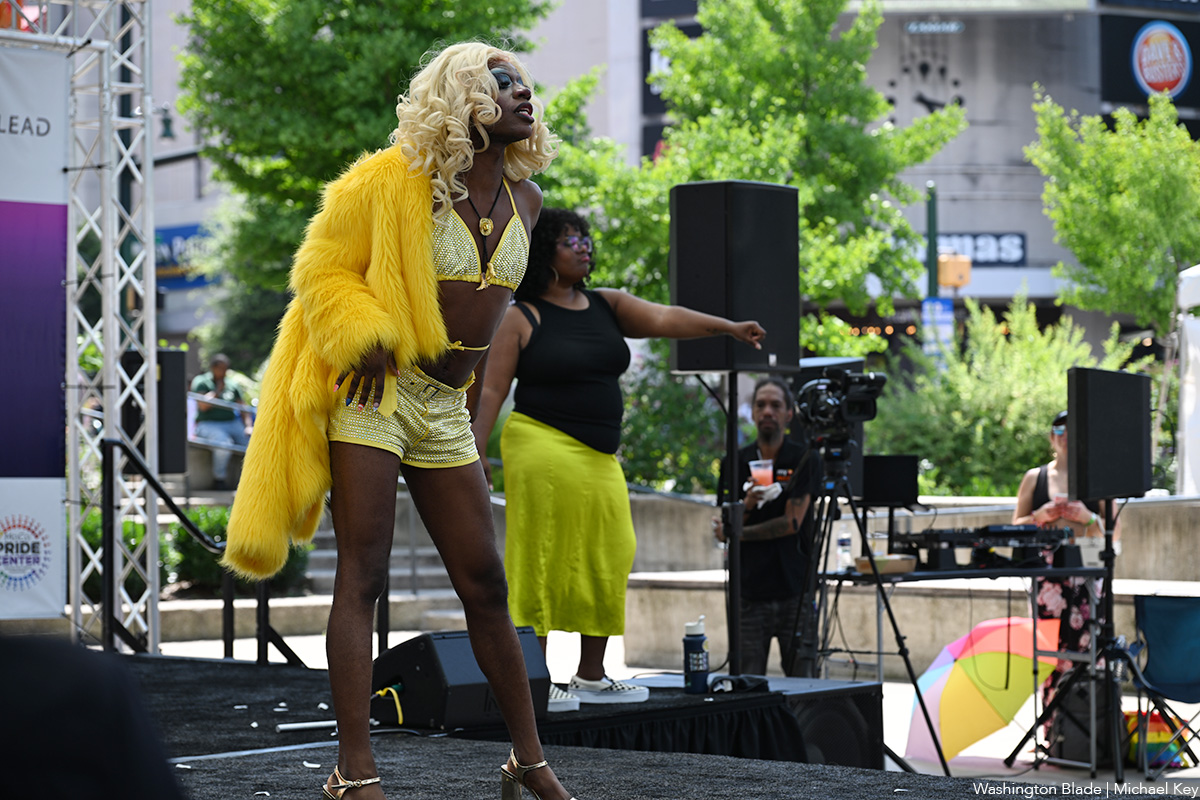

The fifth annual Fredericksburg Pride march and festival was held on Saturday, June 28. A march through the streets of downtown Fredericksburg, Va. was followed by a festival at Riverfront Park.
(Washington Blade photos by Michael Key)
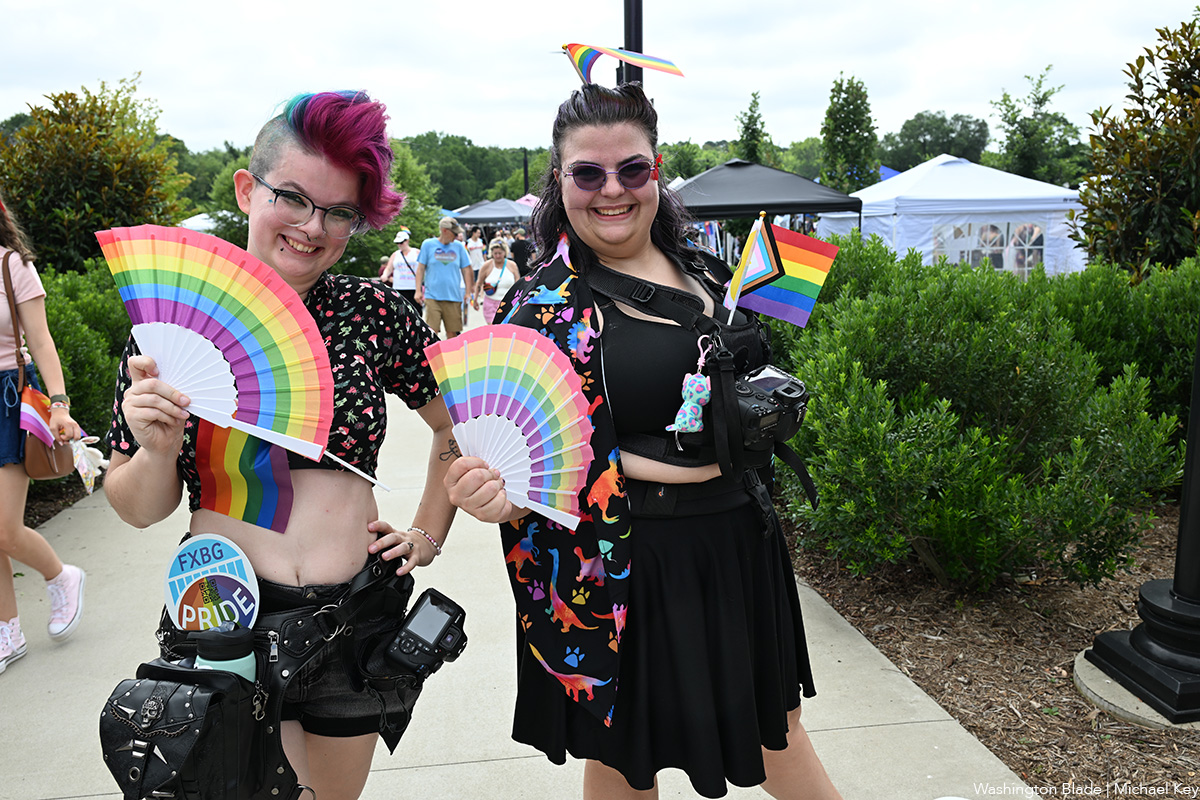
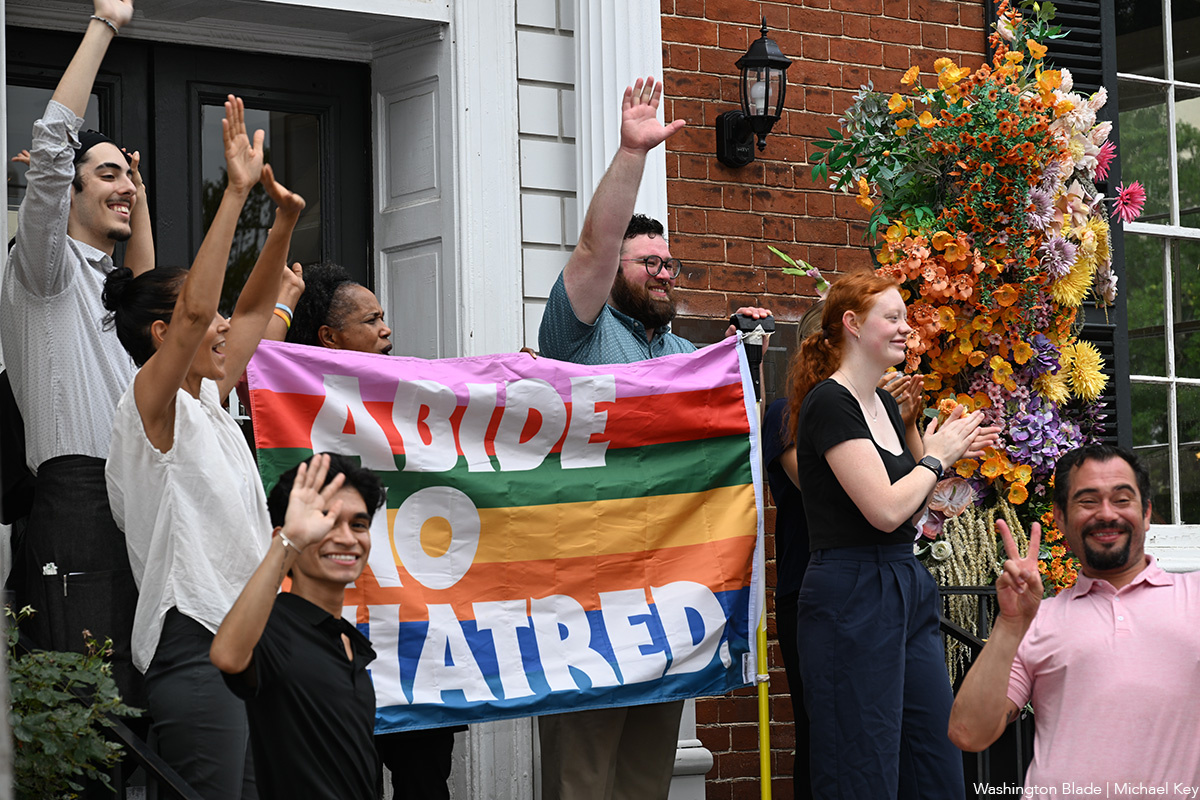
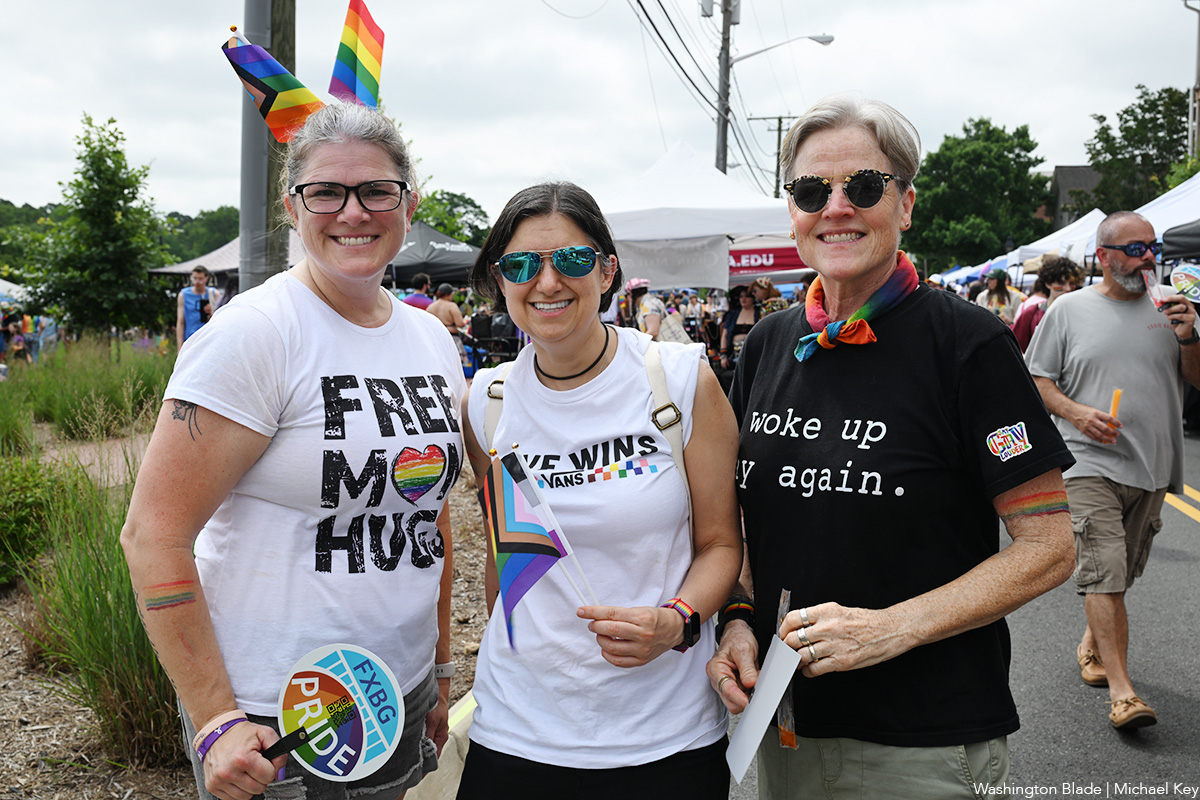




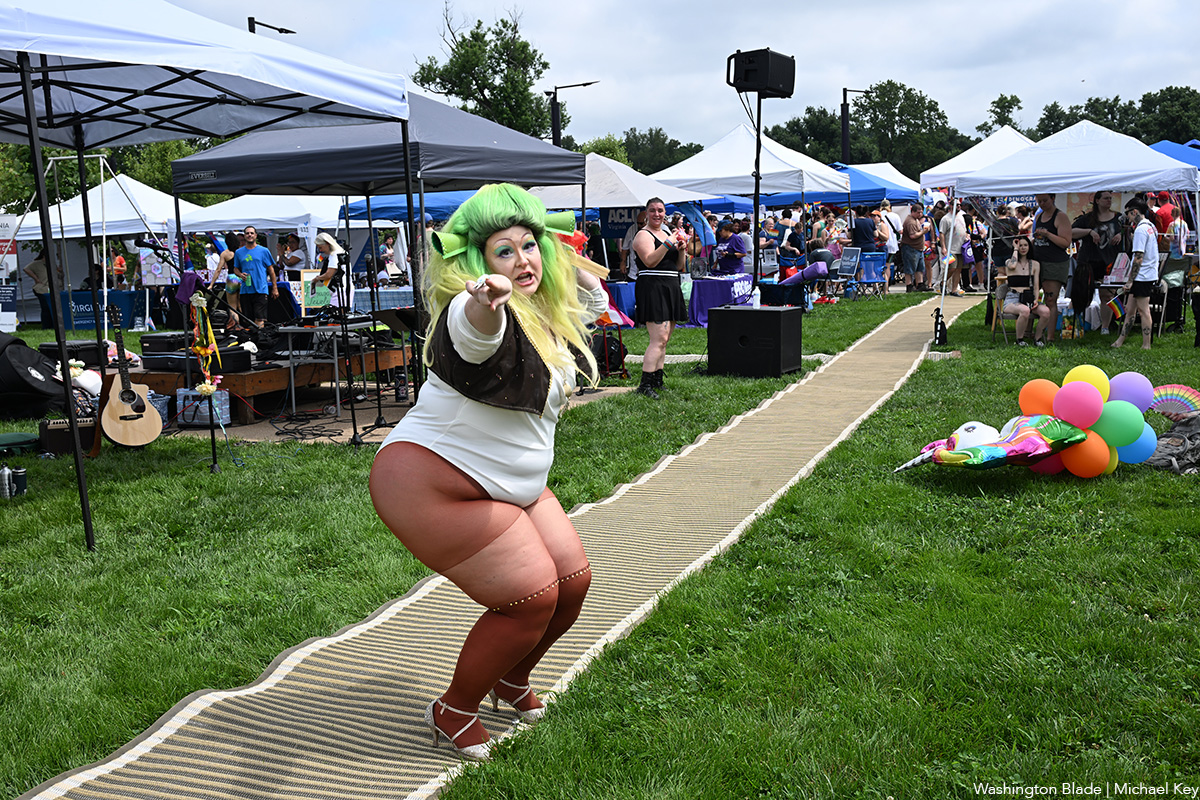




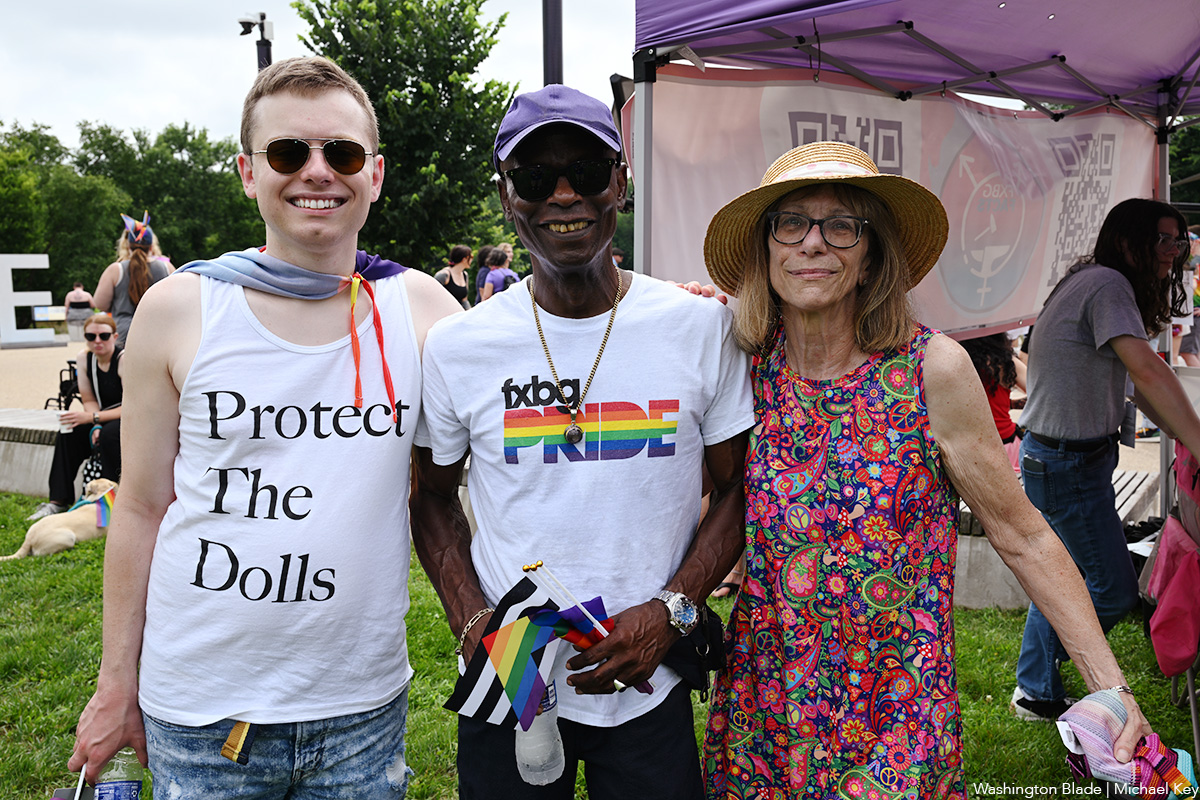




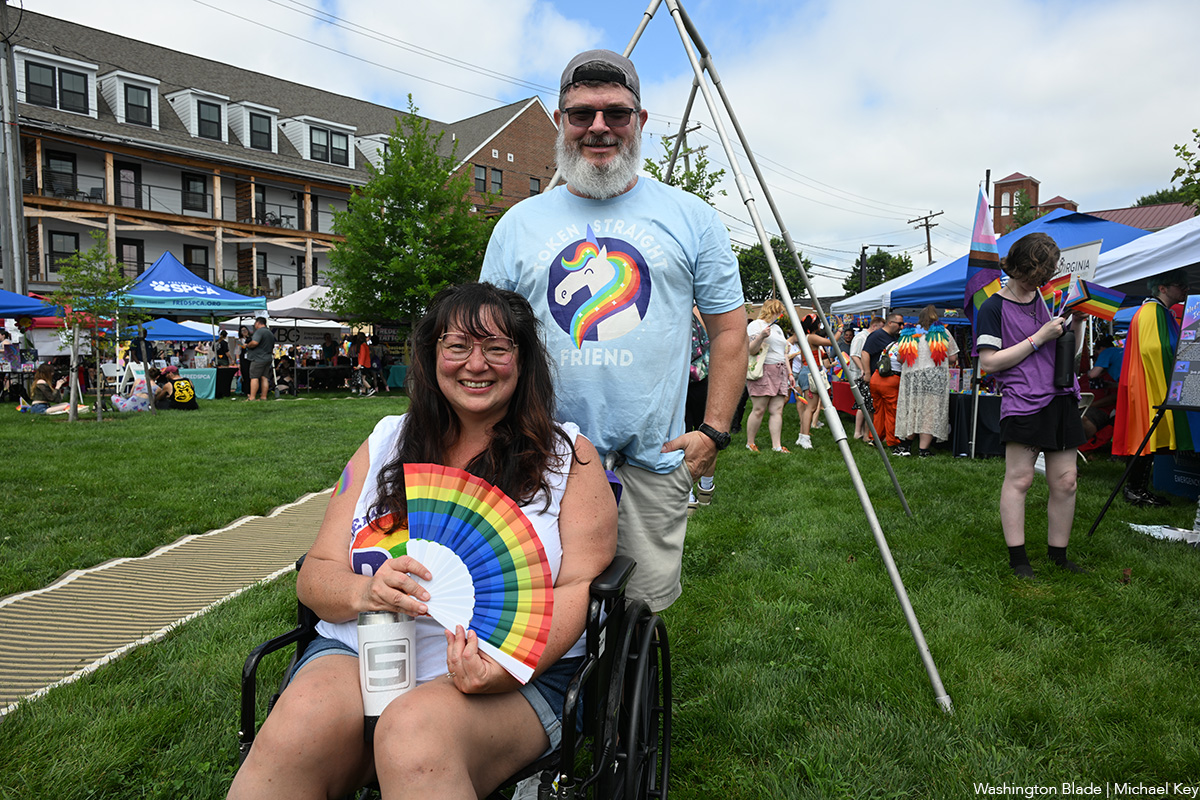

India
Anaya Bangar challenges ban on trans women in female cricket teams
Former Indian cricketer Sanjay Bangar’s daughter has received support
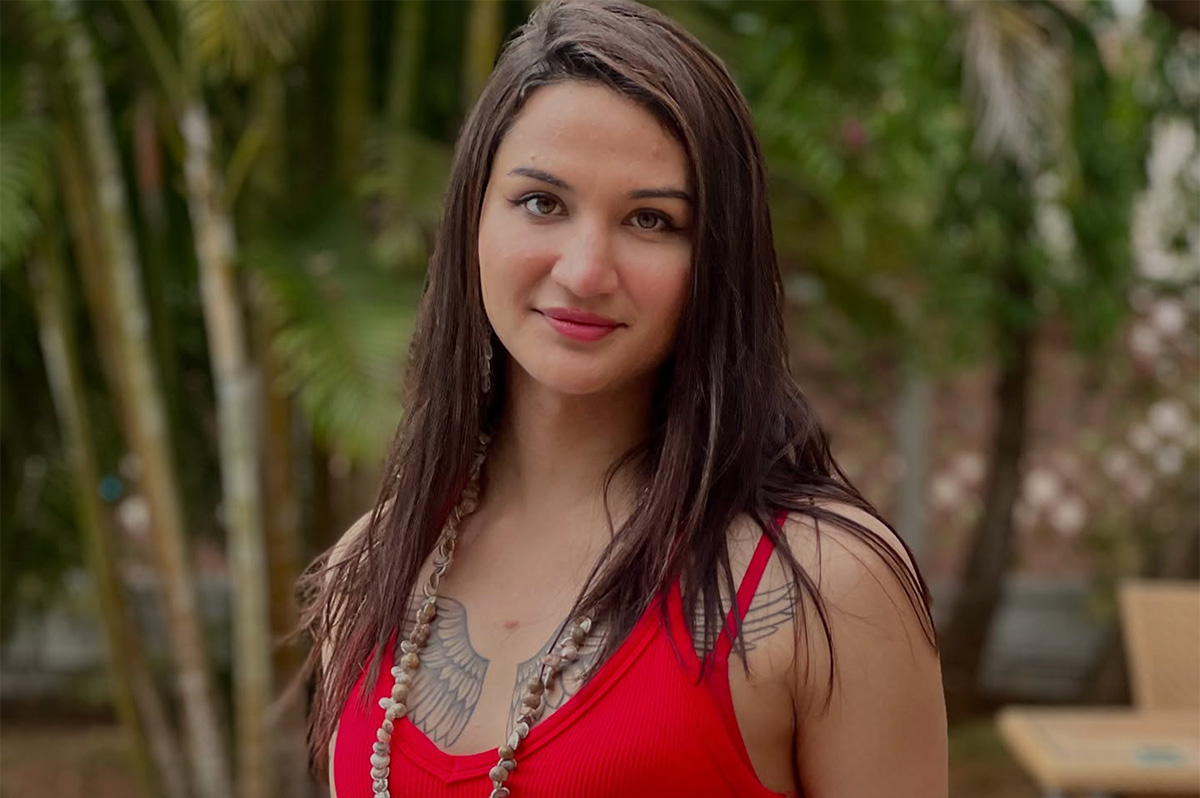
Anaya Bangar, the daughter of former Indian cricketer Sanjay Bangar, has partnered with the Manchester Metropolitan University Institute of Sport in the U.K. to assess her physiological profile following her gender-affirming surgery and undergoing hormone replacement therapy.
From January to March 2025, the 23-year-old underwent an eight-week research project that measured her glucose levels, oxygen uptake, muscle mass, strength, and endurance after extensive training.
The results, shared via Instagram, revealed her metrics align with those of cisgender female athletes, positioning her as eligible for women’s cricket under current scientific standards. Bangar’s findings challenge the International Cricket Council’s 2023 ban on transgender athletes in women’s cricket, prompting her to call for a science-based dialogue with the Board of Control for Cricket in India and the ICC to reform policies for trans inclusion.
“I am talking with scientific evidence in my hand,” Bangar said in an interview posted to her Instagram page. “So, I hope, this makes an impact and I will be hoping to BCCI and ICC talking with me and discussing this further.”
On Nov. 21, 2023, the ICC enacted a controversial policy barring trans women from international women’s cricket. Finalized after a board meeting in Ahmedabad, India, the regulation prohibits any trans player who has experienced male puberty from competing, irrespective of gender-affirming surgery or hormone therapy. Developed through a 9-month consultation led by the ICC’s Medical Advisory Committee, the rule aims to safeguard the “integrity, safety, and fairness” of women’s cricket but has drawn criticism for excluding athletes like Canada’s Danielle McGahey, the first trans woman to play internationally. The policy, which allows domestic boards to set their own rules, is slated for review by November 2025.
Bangar shared a document on social media verifying her participation in a physiological study at the Manchester Metropolitan University Institute of Sport, conducted from Jan. 20 to March 3, 2025, focused on cricket performance. The report confirmed that her vital metrics — including hemoglobin, blood glucose, peak power, and mean power — aligned with those of cisgender female athletes. Initially, her fasting blood glucose measured 6.1 mmol/L, slightly above the typical non-diabetic range of 4.0–5.9 mmol/L, but subsequent tests showed it normalized, reinforcing the study’s findings that her physical profile meets female athletic standards.
“I am submitting this to the BCCI and ICC, with full transparency and hope,” said Bangar. “My only intention is to start a conversation based on facts not fear. To build space, not divide it.”
In a letter to the BCCI and the ICC, Bangar emphasized her test results from the Manchester Metropolitan University study. She explained that the research aimed to assess how hormone therapy had influenced her strength, stamina, hemoglobin, glucose levels, and overall performance, benchmarked directly against cisgender female athletic standards.
Bangar’s letter to the BCCI and the ICC clarified the Manchester study was not intended as a political statement but as a catalyst for a science-driven dialogue on fairness and inclusion in cricket. She emphasized the importance of prioritizing empirical data over assumptions to shape equitable policies for trans athletes in the sport.
Bangar urged the BCCI, the world’s most influential cricket authority, to initiate a formal dialogue on trans women’s inclusion in women’s cricket, rooted in medical science, performance metrics, and ethical fairness. She called for the exploration of eligibility pathways based on sport-specific criteria, such as hemoglobin thresholds, testosterone suppression timelines, and standardized performance testing. Additionally, she advocated for collaboration with experts, athletes, and legal advisors to develop policies that balance inclusivity with competitive integrity.
“I am releasing my report and story publicly not for sympathy, but for truth. Because inclusion does not mean ignoring fairness, it means measuring it, transparently and responsibly,” said Bangar in a letter to the BCCI. “I would deeply appreciate the opportunity to meet with you or a representative of the BCCI or ICC to present my findings, discuss possible policy pathways, and work towards a future where every athlete is evaluated based on real data, not outdated perceptions.”
Before her transition, Bangar competed for Islam Gymkhana in Mumbai and Hinckley Cricket Club in the U.K., showcasing her talent in domestic cricket circuits. Her father, Sanjay Bangar, was a dependable all-rounder for the Indian national cricket team from 2001 to 2004, playing 12 test matches and 15 One Day Internationals. He later served as a batting coach for the Indian team from 2014 to 2019, contributing to its strategic development.
Cricket in India is a cultural phenomenon, commanding a fanbase of more than 1 billion, with more than 80 percent of global cricket viewership originating from the country.
The International Cricket Council, the sport’s governing body, oversees 12 full member nations and more than 90 associate members, with the U.S. recently gaining associate member status in 2019 and co-hosting the 2024 ICC Men’s T20 World Cup. The BCCI generated approximately $2.25 billion in revenue in the 2023–24 financial year, primarily from the Indian Premier League, bilateral series, and ICC revenue sharing. The ICC earns over $3 billion from media rights in India alone for the 2024–27 cycle, contributing nearly 90 percent of its global media rights revenue, with the BCCI receiving 38.5 percent of the ICC’s annual earnings, approximately $231 million per year.
Women’s cricket in India enjoys a growing fanbase, with over 300 million viewers for the Women’s Premier League in 2024, making it a significant driver of the sport’s global popularity. The International Cricket Council oversees women’s cricket in 12 full member nations and over 90 associate members, with the U.S. fielding a women’s team since gaining associate status in 2019 and competing in ICC events like the 2024 Women’s T20 World Cup qualifiers. The BCCI invests heavily in women’s cricket, allocating approximately $60 million annually to the WPL and domestic programs in 2024–25, while contributing to the ICC’s $20 million budget for women’s cricket development globally. India’s media market for women’s cricket, including WPL broadcasting rights, generated $120 million in 2024, accounting for over 50 percent of the ICC’s women’s cricket media revenue.
“As a woman, I feel when someone says that they are women, then they are, be trans or cis. A trans woman is definitely the same as a cis woman emotionally and in vitals, and specially, when someone is on hormone replacement therapy. Stopping Anaya Bangar from playing is discrimination and violation of her rights. It is really sad and painful that every trans woman need to fight and prove their identity everywhere,” said Indrani Chakraborty, an LGBTQ rights activist and a mother of a trans woman. “If ICC and BCCI is stopping her from playing for being transgender, then I will say this to be their lack of awareness and of course the social mindsets which deny acceptance.”
Chakraborty told the Blade that Bangar is an asset, no matter what. She said that the women’s cricket team will only benefit by participation, but the discriminating policies are the hindrance.
“Actually the transgender community face such discrimination in every sphere. In spite of being potent, they face rejection. This is highly inhuman. These attitudes is regressive and will never let to prosper. Are we really in 2025?,” said Chakraborty. “We, our mindset and the society are the issues. We, as a whole, need to get aware and have to come together for getting justice for Anaya. If today, we remain silent, the entire community will be oppressed. Proper knowledge of gender issues need to be understood.”
The BCCI and the International Cricket Council have not responded to the Blade’s repeated requests for comment.




















